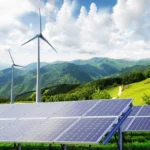The Inland Waterways Authority of India (IWAI) and Amazon Seller Services Private Limited (Amazon) have signed a significant memorandum of understanding (MoU) to promote cargo movement and transportation of customer shipments and products through India’s inland waterways, particularly via the Ganga River (National Waterway 1).
This collaboration aims to utilise the efficiency and sustainability of water transport for e-commerce logistics, potentially reducing environmental impacts and fostering economic growth, the ministry of ports, shipping, and waterways said in a press release.
The agreement was signed in the presence of Union minister of ports, shipping and waterways (MoPSW) and Ayush, Sarbananda Sonowal, secretary of MoPSW T K Ramachandran, IWAI Chairman Sanjay Bandopadhyaya, among other senior officials.
The initiative aligns with the prime minister’s Maritime Amrit Kaal Vision 2047, focusing on enhancing inland waterways as an affordable and sustainable transportation mode. It also resonates with the Maritime India Vision 2030, launched during the Maritime India Summit 2021, which aims to increase inland water transport volumes significantly.
Under the Sagarmala programme, 113 projects worth ₹7,030 crore related to RoRo/RoPax and inland water transport are underway. To date, 15 projects worth ₹1,100 crore have been completed, and 32 projects worth ₹3,900 crores are in progress.
Amazon’s participation in this venture will allow the e-commerce giant to leverage diverse transport modes in India, including rail, air, water, and surface transport. This collaboration is expected to enhance Amazon’s delivery efficiency and reach, reducing transportation costs and opening new opportunities for the e-commerce sector to utilise India’s extensive inland waterways network.
As of 2023, the cargo handled by the inland waterways stands at 126 MMT. The goal, as per the Maritime India Vision 2030 and Amrit Kaal Vision 2047, is to significantly increase this volume, with targets set for 2030 and 2047. Additionally, the plan includes increasing the number of operational waterways to over 50 by 2047, with 24 already operational as of now.
Source: Fibre2Fashion
















